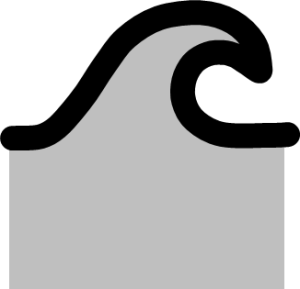In this section (Generic data – Waves) you can define the wave conditions which can be used in all tools. The generic wave data consists of 2 types: the ‘wave climate’ and ‘extreme waves’. This data is used in tools where single extreme waves are of relevance. Both wave types can be defined nearshore or offshore. When defined offshore, the offshore water depth should also be provided. In this case, the waves will be transformed to nearshore wave conditions using linear wave theory.
Wave climate
This data is used in tools where the entire wave-climate is of relevance, such as the coastline development tool.
The entire wave climate can be loaded from a *.csv file by clicking the () button. An additional window is displayed in which a *.csv file can be selected. Fill in the number of header rows. These rows will be skipped when reading the file. Enter a field delimiter which seperates the Hs (m), Tp (s), Dir (nautical North degrees) and Occurance columns in the *.csv file. Make sure that the column order corresponds to this list, and that the values have the correct dimensions. Click load climate from file to copy the wave climate occurrences into to CoDeS.
In stead of loading the wave climate from an external file, you can also fill in the values manually by adding them directly into the table.
Subsequently, the wave data can be classified (compressed/binned). After entering the wave climate, click the () button to start compressing the wave climate into bins. Enter a bin size of Hs, Tp and Dir. and click 'Classify waves'. The wave climate is now compressed by summing the occurrences of all wave characteristics within a Hs, Tp and Dir bin.
The wave climate can be visualized as a wave rose by clicking on the () button, and a joint occurrence table by clicking on the () button.
Extreme wave climate
This data is used in tools where the extreme wave-climate is of relevance, such as the breakwater design tool.
Since this is typically only 1 or a few waves, no classification (compressing/binning) or the extreme wave data is available.


